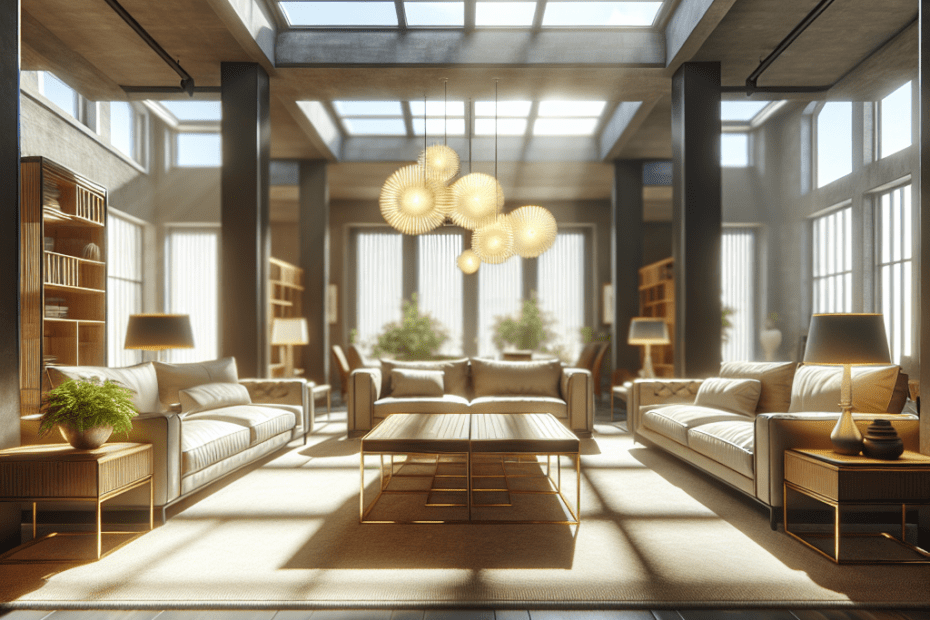“`html
Introduction
Many homeowners strive to create welcoming and well-lit spaces by emphasizing the use of natural light. A well-executed Natural Light Furniture Layout can significantly improve the ambiance and energy efficiency of their homes. They look forward to soaking up the sun indoors while enjoying a space that feels more open and inviting. Understanding how to arrange furniture to highlight natural light sources is the first step toward achieving these goals.
Understanding Natural Light
Natural light comes from the sun and greatly impacts a room’s atmosphere. In fact, researchers from the National Renewable Energy Laboratory found that daylighting strategies can cut lighting energy use by up to 75% (Source: NREL). Maximizing natural light not only enhances the visual appeal but also promotes better mental health and productivity according to a study published by the American Journal of Public Health.
Importance of a Natural Light Furniture Layout
A Natural Light Furniture Layout focuses on arranging furniture in a way that allows sunlight to flood every corner of the room. By doing so, individuals can transform dim spaces into lively, functional areas without relying heavily on artificial lighting. This layout approach not only saves energy but also nurtures a healthier living environment.
Steps to Highlight Natural Light Sources
1. Identify Primary Light Sources
They need to first locate the main sources of natural light, such as windows, skylights, and glass doors. Knowing where the light comes from helps in planning the best furniture arrangement.
2. Keep Windows Unobstructed
The benefit of natural light diminishes when windows are blocked by heavy furniture. Keeping windows clear ensures maximum light penetration. Furniture like couches and bookshelves should be placed perpendicular to windows to allow light flow.
3. Use Reflective Surfaces
The inclusion of reflective surfaces, such as mirrors and glass tables, can further distribute natural light across the room. Reflection redirects sunlight, reaching areas that are generally shadowed. This technique makes the space feel brighter and larger.
4. Light-Colored Furniture
Choosing light-colored furniture supports the distribution of natural light. Lighter hues reflect sunlight rather than absorbing it, making the room feel more vibrant. A pale sofa, for instance, complements the natural light by giving it something bright to play off.
5. Adequate Spacing Between Pieces
Ensure that there’s ample space between pieces of furniture. Crowded spaces can create shadows, diminishing the room’s brightness. An open layout facilitates easier light movement.
| Furniture Arrangement Tips | Benefits |
|---|---|
| Keep windows unobstructed | Maximizes light penetration |
| Use reflective surfaces | Enhances light distribution |
| Select light-colored furniture | Reflects more natural light |
| Adequate spacing | Prevents shadows |
Statistics on Furniture Layout and Natural Light
In a survey by Home Design Trends, 68% of homeowners expressed that rooms showcasing natural light felt more inviting and aesthetically pleasing (Source: Home Design Trends Survey). Additionally, a report from the National Renewable Energy Laboratory highlighted that efficient daylighting could decrease household energy costs by up to 25% annually (Source: NREL).
Key Takeaways
- A well-planned furniture arrangement emphasizes natural light sources, creating a more welcoming environment.
- Key strategies include keeping windows clear, using reflective surfaces, selecting light colors, and ensuring proper spacing.
- Natural light not only enhances interior aesthetics but also offers energy savings and health benefits.
FAQs
- Why is natural light important in a room?
- What should be avoided when arranging furniture with natural light in mind?
- How do reflective surfaces affect natural light?
- What colors work best in a natural light layout?
- How can they improve a room’s brightness without new windows?
Natural light enhances the aesthetics of a room, improves mood, and boosts productivity while reducing reliance on artificial lighting.
Avoid placing large pieces of furniture directly in front of windows, as this can block light and create unnecessary shadows.
Reflective surfaces distribute sunlight throughout the room, minimizing shadowed areas and making spaces appear brighter.
Light-colored furniture and decor, like whites, grays, and pastels, are ideal as they reflect sunlight effectively.
They can use mirrors, choose light-colored furnishings, and maintain open layouts to maximize the existing natural light.
“`
